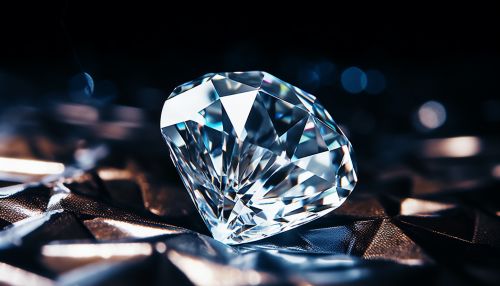Diamond
Introduction
Diamond is a solid form of the element carbon with its atoms arranged in a crystal structure called diamond cubic. Diamond is renowned as a material with superlative physical qualities, most of which originate from the strong covalent bonding between its atoms. In particular, diamond has the highest hardness and thermal conductivity of any bulk material.
Formation
Diamonds are formed deep within the Earth's mantle and are brought to the surface by deep-source volcanic eruptions. These eruptions tear out pieces of the mantle and carry them rapidly to the surface. This rapid ascent is important, as it prevents the diamonds from converting to graphite, another form of carbon that is not as hard or as valuable as diamond.
Physical Properties
Diamonds are renowned for their superlative physical qualities. The most notable of these is their extreme hardness. Diamond is the hardest known natural material, scoring a 10 on the Mohs scale of mineral hardness. This hardness is the result of the strong covalent bonds between the carbon atoms in the diamond.
Optical Properties
Diamonds also have unique optical properties. They are highly transparent and can refract light to a higher degree than any other naturally occurring substance. This high refractivity is what gives diamonds their characteristic sparkle and brilliance.
Uses
Diamonds have many uses, both industrial and decorative. In industry, diamonds are used for cutting, grinding, and drilling due to their hardness. They are also used in high-performance bearings and in specialized windows. Decoratively, diamonds are most commonly used in jewelry, where their hardness, brilliance, and rarity make them highly prized.
Mining and Production
Diamonds are mined from the earth through both open pit and underground methods. Diamonds can also be produced synthetically in a high-pressure, high-temperature process that approximates the conditions under which diamonds form naturally.
Market
The diamond market is largely controlled by a few major mining companies, the largest of which is De Beers. These companies have extensive control over diamond prices and supply, and they have been accused of unethical business practices, including price fixing and the sale of blood diamonds.
Cultural Significance
Diamonds have a long history of cultural significance. They have been used as decorative items since ancient times, and they have also been used as religious icons and as symbols of wealth and power.
See Also


